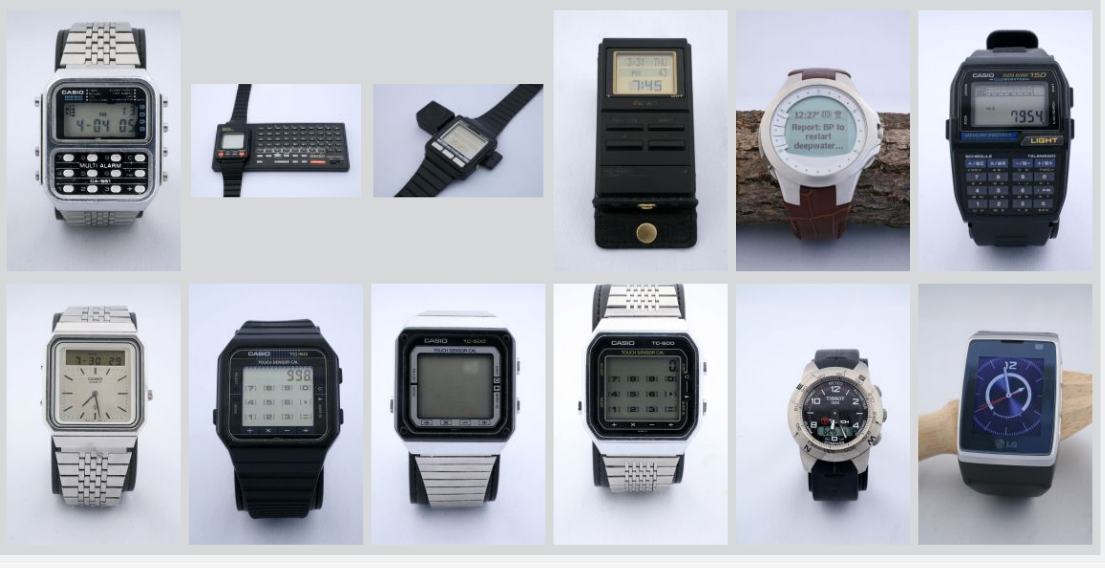Chronicle of the Smart Watch Foretold: A 37-Year History
With the $150 Pebble e-paper watch starting to ship, and Apple rumored to be making an iWatch, these wrist-mounted computers are being hyped by some as revelations in how people can interact with their devices.
Bill Buxton’s reaction? How little ye know.
The principal researcher at Microsoft Research, a man who is known as a pioneer in the field of human-computer interaction as well as a long-time gadget enthusiast, is having a bit of a gleeful moment these days as he shows off his museum-worthy personal collection of electronics devices. His watches are coming back in style. Displaying a few specimens on stage at Microsoft’s TechFest recently, he mused good-naturedly, “What the hell have we been doing the last 20-odd years?”
Indeed. Here are some highlights from his rather amazing trove.
Orient, 1976: This watch employed capacitive touch sensing to trigger LED lights. One would double click to drill down in the menu—this is before the invention of the computer mouse, Buxton notes.
Casio, 1984: “With this calculator watch, the touch screen is used as the surface on which you write, with your finger, the numbers and operators of your calculation. This was 17 Moore’s Laws ago!,” Buxton writes.
Microsoft SPOT Watch, No Year/Circa 2000s: “This watch has no touch screen or fancy buttons. It sucks information out of the sidebands of the FM radio spectrum. It is a one-way messenger watch; for example, weather, stock quotes, and news can be fed to you RSS style,” Buxton writes.
LG Electronics, 2009: Buxton says this model had a full-sized SIM chip, wi-fi, bluetooth, an address book, calendar, and video conferencing tools. “This is a total smartphone,” he says. “It is the total Dick Tracy package.”
Buxton’s point is that disruptively new computing interfaces hardly ever appear out of nowhere, a fact the current wave of smart watch sellers would do well to recognize if they don’t already. “I’m not trying to say what’s going on today isn’t interesting. But it becomes more interesting if you drop the hype,” he says.
As for me, I think the time may be right for the smart watch craze to really catch on. The measurable advance, however, will be mostly in the realm of human-human interaction, rather than human-computer. Will people stop checking e-mail over dinner? Unlikely. Might they at least be less obvious about it? Sure.

Keep Reading
Most Popular
Large language models can do jaw-dropping things. But nobody knows exactly why.
And that's a problem. Figuring it out is one of the biggest scientific puzzles of our time and a crucial step towards controlling more powerful future models.
The problem with plug-in hybrids? Their drivers.
Plug-in hybrids are often sold as a transition to EVs, but new data from Europe shows we’re still underestimating the emissions they produce.
Google DeepMind’s new generative model makes Super Mario–like games from scratch
Genie learns how to control games by watching hours and hours of video. It could help train next-gen robots too.
How scientists traced a mysterious covid case back to six toilets
When wastewater surveillance turns into a hunt for a single infected individual, the ethics get tricky.
Stay connected
Get the latest updates from
MIT Technology Review
Discover special offers, top stories, upcoming events, and more.